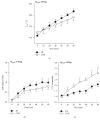Aging and Thermoregulatory Control: The Clinical Implications of Exercising under Heat Stress in Older Individuals
- PMID: 30155483
- PMCID: PMC6098859
- DOI: 10.1155/2018/8306154
Aging and Thermoregulatory Control: The Clinical Implications of Exercising under Heat Stress in Older Individuals
Abstract
Climate change is predicted to bring about a greater variability in weather patterns with an increase in extreme weather events such as sustained heat waves. This change may have a direct impact on population health since heat waves can exceed the physiological limit of compensability of vulnerable individuals. Indeed, many clinical reports suggest that individuals over the age of 60 years are consistently the most vulnerable, experiencing significantly greater adverse heat-related health outcomes than any other age cohort during environmental heat exposure. There is now evidence that aging is associated with an attenuated physiological ability to dissipate heat and that the risk of heat-related illness in these individuals is elevated, particularly when performing physical activity in the heat. The purpose of this review is to discuss mechanisms of thermoregulatory control and the factors that may increase the risk of heat-related illness in older individuals. An understanding of the mechanisms responsible for impaired thermoregulation in this population is of particular importance, given the current and projected increase in frequency and intensity of heat waves, as well as the promotion of regular exercise as a means of improving health-related quality of life and morbidity and mortality. As such, the clinical implications of this work in this population will be discussed.
Figures


References
-
- Coates L., Haynes K., O'Brien J., McAneney J., De Oliveira F. D. Exploring 167 years of vulnerability: An examination of extreme heat events in Australia 1844-2010. Environmental Science & Policy. 2014;42:33–44. doi: 10.1016/j.envsci.2014.05.003. - DOI
-
- Watts N., Adger W. N., Agnolucci P., et al. Health and climate change: policy responses to protect public health. The Lancet. 2015;286:1861–1914. - PubMed
Publication types
MeSH terms
LinkOut - more resources
Full Text Sources
Other Literature Sources
Medical
Research Materials

